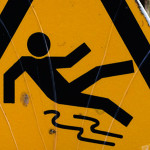From a legal perspective, burns may only be a prosecutable offense if they require hospitalization or if they prevent a person from living their normal life. Burns that require hospital treatment are third-degree and deep second-degree burns. The headline-making case of the 90’s when a woman sued McDonald’s and won happened because of the deep tissue damage and scarification caused by McDonalds’ hot coffee. However, for the victim of a burn, it can be difficult to determine how serious his or her burn is.
First Degree Burns
First degree burns require the least amount of care, and usually go away on their own. The clinical definition for a first-degree burn is that only the outer layer of the skin, or epidermis, is damaged. The epidermis turns red, and occasionally the skin gets inflamed and sore. However, the top layer of skin doesn’t burn through to the next. Treatment for first-degree burns involve putting a damp, cool cloth over the affected area and try to keep it from further injury. Never apply ice to a burn. First-degree burns usually disappear within a week. These aren’t serious unless the burn is over the majority of a sensitive area such as the face, groin, hands, feet, or a major joint, which prevents the victim from living his or her normal life.
Second Degree
Burns Second degree burns are defined as burns that go through the epidermis to the second layer of skin, the dermis. These burns typically turn the skin a pinkish red and form blisters. When pressure is applied to the area of the burn, blotchy discoloratons form. These burns result in swelling and intense pain. Second degree burns typically go away after two weeks to a month. Depending on how deeply the dermal tissue is affected and how extensive the damage is, second-degree burns may or may not require hospitalization. If the burn is under three inches in diameter and the skin is red, it should be treated as a first-degree burn. If the skin turns white, secretes fluid, or loses sensation, it is a more serious burn that you should have a doctor look at, as it could cause hypertrophic scarring.
Third Degree Burns
Third degree burns are the most serious class of burn, in which all three layers of the skin are damaged, all the way to the subcutaneous tissue. They are the most visually striking, often resulting in physical depression, charring, or a leathery appearance. Skin may fall off, and muscle or even bone can be damaged as well. Third degree burns should definitely be treated by a doctor as soon as possible. Even with medical treatment, third degree burns often result in irreversable nerve or tissue damage, and nearly always cause permanent scarring. Many require skin grafts or other reconstructive efforts to fully heal. They are often pain-free, as the nerves which receive pain have been completely burnt off and damaged. While waiting for medical attention, it is important to cover the burn with a cool, clean, damp sanitary bandage, cloth, or towel.
For more information on Burn Injuries please contact our law firm.












